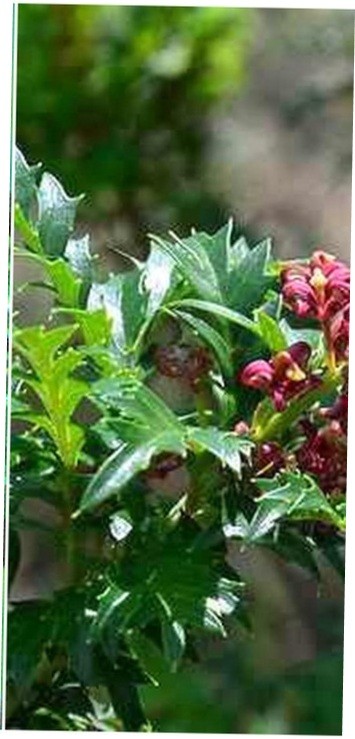King's lomatia
(Lomatia tasmanica)

Description
Lomatia tasmanica, commonly known as King's lomatia, is a shrub of the family Proteaceae native to Tasmania. Growing up to 8 metres (26 ft) tall, the plant has shiny green pinnate (lobed) leaves and bears red flowers in the summer, but yields neither fruit nor seeds. King's lomatia is unusual because all of the remaining plants are genetically identical clones. Because it has three sets of chromosomes (a triploid) and is therefore sterile, reproduction occurs only vegetatively: when a branch falls, that branch grows new roots, establishing a new plant that is genetically identical to its parent. Charles Denison "Deny" King discovered the plant in 1934, though it was not described until 1967 by botanist Winifred Mary Curtis of the Tasmanian Herbarium. Only one colony of King's lomatia is known to be alive in the wild, consisting of about 600 plants over an area 1.2 km in length. The individual plants of L. tasmanica are straggly shrubs or small trees to 8 m (26 ft) high, though taller or longer trunked specimens are often bent over. The trunks of very old plants can reach diameters of 8 cm (3.1 in). The upper branchlets are covered in fine rusty fur. The stems may grow roots from nodes on the ground. The leaves are alternately arranged and more crowded towards the ends of branches. Roughly oval in shape, they are 10–18 cm (3.9–7.1 in) long and pinnate, made up of 11 to 25 primary lobes that have irregularly toothed margins and are sometimes subdivided into smaller lobes. The upper surface is green and shiny, while the undersurface is partly hairy, particularly along the midrib. Flowering takes place in February. The terminal flowerheads, or inflorescences, are 9–10 cm (3.5–3.9 in) long.
Taxonomic tree:







